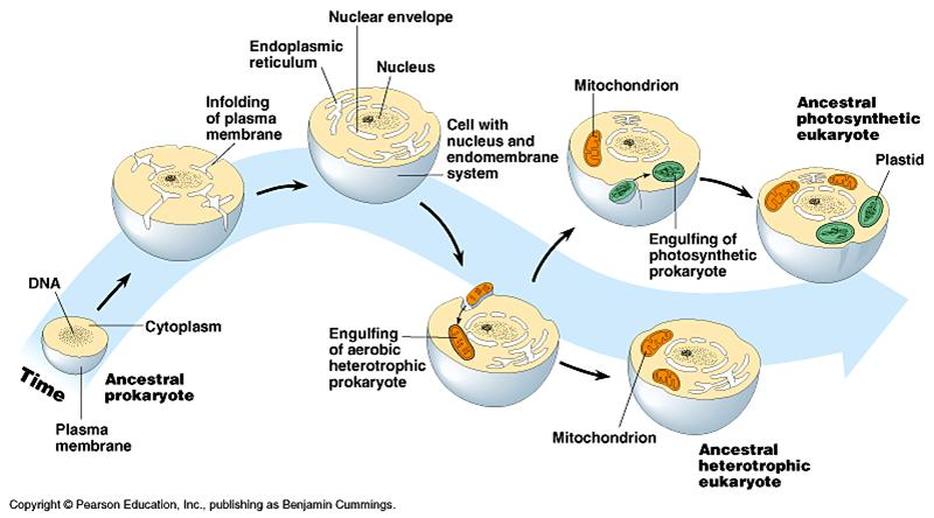We have all studied the mitochondria in school; teachers would teach us that the mitochondria was the powerhouse of the cell. But there were still many unanswered questions about the mitochondria that had always been a topic of great debate to scientists. The most pressing question was about its origin. How did it come about? This question remained a mystery, at least until the late 1960s, when Margulis started studying the structure of cells. To Margulis, the mitochondria in cells bore a striking resemblance to bacteria. Both bacteria and mitochondria had a double membrane, its own circular DNA and similar methods of reproduction.
Illustration of the similarities between bacteria and mitochondria
While she was not the first to make this observation, as it was widely known that scientists had been struck by the similarity since the discovery of mitochondria, Margulis proceeded to introduce a theory that casted a long shadow across contemporary discussions about the origin of the mitochondria. Her theoretical paper titled “on the Origin of Mitosing Cells” that introduced and illustrated this theory was rejected by about fifteen scientific journals. Finally accepted by the Journal of Theoretical Biology, it is considered a landmark in modern endosymbiotic theory today.
In the now generally accepted endosymbiotic theory, Margulis demonstrated that current plant cells resulted from the merging of separate ancestors, the chloroplast evolving from endosymbiotic cyanobacteria. She demonstrated that the descent of mitochondria originated from bacteria and that the descent of chloroplasts originated from cyanobacteria. Margulis was the first to come up with concrete evidence that supports it.

Summary of the Endosymbiosis Theory
Weathering constant criticism of her ideas for decades, Margulis was famous for her tenacity in pushing this theory forward, despite the opposition she faced at the time.

